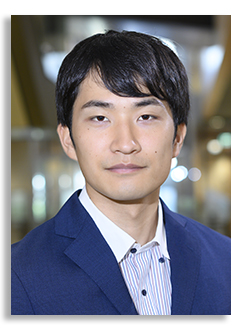
Click image for HiRes
Abstract
In this study, voltage loss in quantum structure solar cells is evaluated based on the detailed balance theory. It is found that the suppression of radiative recombination voltage loss plays an important role to improve the performance of quantum structure solar cells. Theoretical calculations in this study show that the radiative recombination voltage loss can be suppressed by increasing a thickness of a quantum well layer of quantum structure.
Therefore, this study proposes a new quantum structure consisted of thick InGaAs quantum well layers, low-P composition GaAsP strain relaxation intermediate layers, and ultra-thin GaAsP barrier layers with ultra-high-P composition. This ultra-thin GaAsP layer enables us to achieve high carrier transport efficiency and strain compensation at the same time even with thicker quantum well layers. The low-P composition GaAsP intermediate layer successfully inhibits the formation of crystal defects, which would appear around the interface of InGaAs and ultra-high-P-composition GaAsP.
Thereby, the quantum structure solar cell fabricated in this study achieves both high carrier transport efficiency and low voltage loss. By using this quantum structure solar cell as a middle subcell of a conventional Ge-lattice-matched triple-junction solar cell, InGaP/GaAs/Ge, we can improve the energy conversion efficiency from 29.5% to 30.9%. With further improvement, the energy conversion efficiency of 35% is achievable.
The analysis of voltage loss conducted in this study can be applied not only to quantum structure solar cells but also to solar cells made of other materials. This study has also provided a guideline for the development of materials for low voltage loss solar cells. In order to suppress voltage loss, it is essential to improve crystal quality and at the same time steepen a rise of an absorption edge.
Ge-lattice-matched triple-junction solar cells has been mainly used for space applications. This study successfully reduces the radiative recombination voltage loss from 83 mV to 38 mV and contributes to improve the efficiency of the Ge-lattice-matched triple-junction solar cells. The improvement of the efficiency of the conventional cells reduces the installation area and cost per generated electrical power, and paves the way for the terrestrial applications.
Click here to see all available video seminars.
Click here to go to the SPREE HOMEPAGE.
Brief Bio
Meita Asami received the B.E. and M.S. degrees in electrical engineering from The University of Tokyo, Tokyo, Japan, where he is currently working toward the Ph.D. degree. He got a student award at European Photovoltaic Solar Energy Conference and Exhibition (EUPVSEC) in 2020. He has published 3 peer reviewed journal articles as a first author. He is working on the development of high efficiency III-V solar cells under the supervision of Prof. Masakazu Sugiyama.
